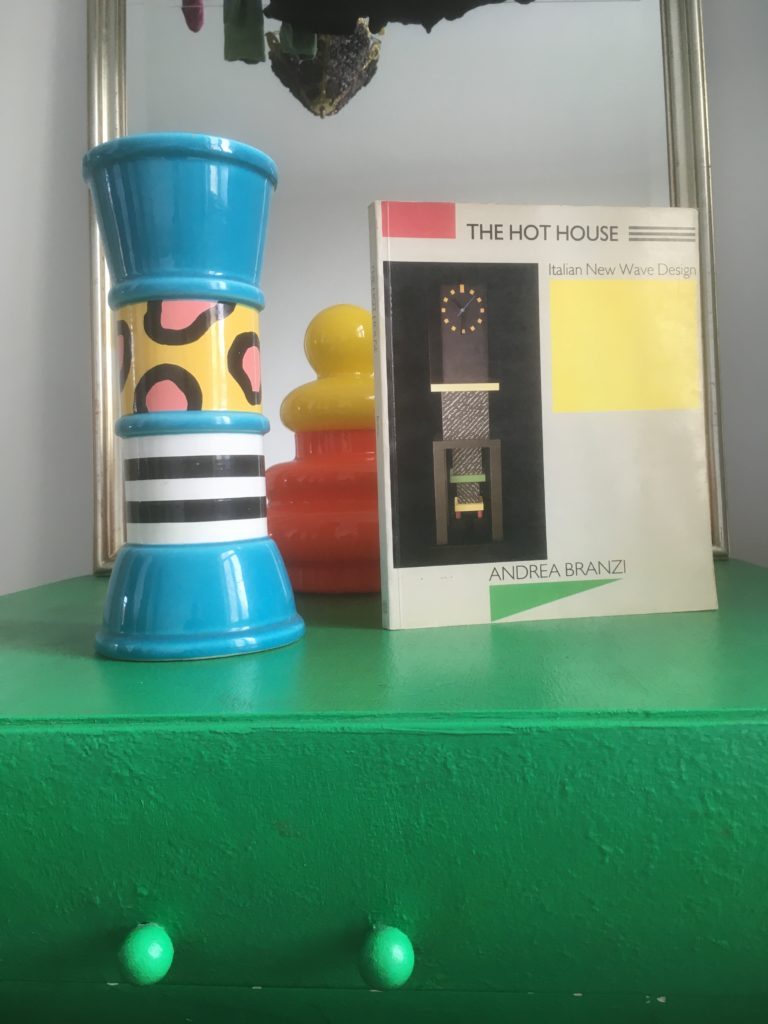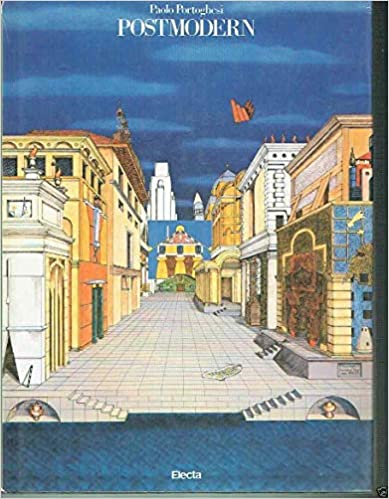
Deze week stierf de Italiaanse designer en architect Andrea Branzi.
Hij was een postmodernist.
Continue reading

Deze week stierf de Italiaanse designer en architect Andrea Branzi.
Hij was een postmodernist.
Continue reading

Vlado Milunić was een Tsjechisch architect bekend omwille van het gebouw Dancing House (1996) in Praag.
Hij ontwierp die getorste structuur samen met de Amerikaan Frank Gehry.
Het gebouw wordt tot de klassiekers der postmoderne architectuur gerekend.
Ook de haast betekenisloze term deconstructivisme wordt er graag op geplakt.
Ricardo Bofill was a Spanish architect who built Xanadu (1971), La Muralla Roja (1973) and Walden 7 (1975).
His work references Gaudí, Palladio and Archigram.
Bofill’s opus is of major significance in European postmodern architecture.
Richard Rogers was a British architect. He is best known for designing and building the Centre Pompidou (1977), the first postmodern building.
The film above is a strange juxtapoem. It is a film of the construction phases of the Centre Pompidou set to the tones of “Black Cow” (1977) by Steely Dan.
Greg Tate was was an American writer, musician, and producer.
A long-time critic for The Village Voice, Tate focused particularly on African-American music and culture.
Also a musician himself, he was a founding member of the Black Rock Coalition and the leader of Burnt Sugar.
He is known for such pieces as “Yo! Hermeneutics!” (1985) and was interviewed by Mark Dery in “Black to the Future” (1994), making Tate a key figure in the protohistory of black science fiction.
Some have called a rogue scholar and when one reads “Yo! Hermeneutics!”, one does get the feeling of having landed in an African-American version of the Sokal affair.
Charles Jencks was an American cultural and architectural theorist best-known for playing a decisive role in the historiography of postmodernism by publishing the book The Language of Post-Modern Architecture (1977) more than fifty years ago.
He was not the first to play a role in this historiography, Robert Venturi, who died in 2018, had published Learning from Las Vegas (1972) before him.
For me, Jencks’s death was a good occasion to score a copy of The Language of Post-Modern Architecture at my university library.
I got hold of a first edition, which is important because it features the introduction which is not part of subsequent editions (it’s not, for example, in the 2002 edition which I also lent).
This introduction is the one which reflects on the adequacy of the new term postmodernism in these words:
“The phrase ‘post-modern’ is not the most happy expression one can use concerning recent architecture. It is evasive, fashionable and worst of all negative – like defining women as ‘non-men’.”–p. 9
The second section of the book, titled “The death of modern architecture” has a poignant criticism on modern architecture, more particular a criticism of Purist ‘living machine‘ Corbusier style architecture. The critical analysis of this type of architecture, which reminds me of the progressivism-skeptic discourse of John Gray states:
“[The] Purist style, […] was meant to instil […] corresponding values in the inhabitants. Good form was to lead to good content, or at least good conduct; the intelligent planning of abstract space was to promote healthy behavior. Alas, such simplistic ideas, taken over from philosophic doctrines of Rationalism, Behaviourism and Pragmatism, proved as irrational as the philosophies themselves. Modern architecture, as the son of the Enlightenment, was an heir to its congenital naivities […] These shortcomings are now well known, thanks to the writings of Ivan Illich, Jacques Ellul, E. F. Schumacher, Michael Oakeshott and Hannah Arendt.”–p.10
This second section also contrasts the “not the most happy” genesis of the term postmodernism with the happiness of being able to determine the exact moment of the “death of modern architecture”:
“Modern architecture died in St. Louis, Missouri on July 15, 1972 at 3:32 p.m. (or thereabouts) when the infamous Pruitt–Igoe scheme, or rather several of its slab blocks, were given the final coup de grâce by dynamite.”–p.9
Jencks was not the first to criticize modern architecture and certainly not the last. “Machines for living” schemes such as the Pruitt-Igoe housing project, for various critics, including Tom Wolfe, illustrated both the essential unlivability of Bauhaus-inspired box architecture, and the hubris of central planning.
Incidentally, the death of modern architecture coincides with the death of the avant-garde.
But enough.
I leave you with a fragment of Koyaanisqatsi (1982) which features footage of Pruitt–Igoe and of its demolition (above).
Alessandro Mendini was an Italian designer and architect.
He is known for such items as the Proust Armchair (1978).